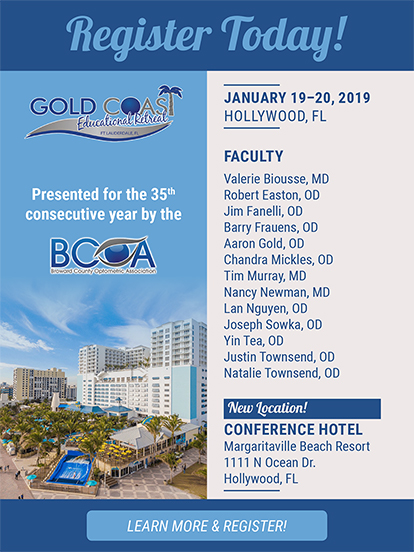Dry eye disease affects hundreds of millions of people and is one of the most common causes of patient visits to their eye care practitioner.1 Two forms of dry eye disease are recognized—aqueous deficient and evaporative. Evaporative dry eye, caused by meibomian gland dysfunction (MGD), is the most common diagnosis.1,2 In patients with MGD, signs and symptoms are chronic and progressive, and the condition may result in significant lifestyle changes.
Many treatment options are available for MGD, from the simple application of warm compresses to more elaborate, office-based treatments. Evacuation of meibomian glands via vectored thermal pulsation (VTP) has recently been shown to be a highly effective treatment. Recently, Hagen et al compared the efficacy of VTP using the LipiFlow device (Johnson & Johnson Vision) versus doxycycline therapy.2
STUDY DESIGN AND FINDINGS
Hagen et al conducted the study to compare the effect of single-dose VTP therapy with a 3-month course of oral doxycycline in patients with moderate to severe MGD.2 Patients had similar baseline findings: meibomian gland function (as determined by the number of glands yielding liquid secretions when force was applied), scores on the Standard Patient Evaluation for Eye Dryness (SPEED) questionnaire, tear breakup time (TBUT), and corneal and conjunctival staining patterns were comparable between the two groups.
Researchers randomly assigned 28 patients in a 1:1 ratio to receive a single VTP therapy session or oral doxycycline. Patients in the doxycycline group were given 100 mg twice daily on days 1 through 14 and 100 mg once daily on days 15 through 90. The patients were evaluated before treatment and 3 months after treatment.
At 3 months, patients in both groups showed significant improvement in meibomian gland function and conjunctival staining patterns. SPEED scores for both groups improved compared with baseline; however, SPEED scores of patients in the VTP group were significantly better than the scores of patients in the doxycycline group. Patients in the VTP group showed significant improvement in TBUT and corneal staining patterns. The researchers found no statistically significant changes in TBUT or corneal staining patterns in the doxycycline group.
Regarding safety, two patients in the doxycycline group discontinued treatment due to stomach upset or intolerance to the medication, and other side effects of doxycycline use have been documented in previous studies. VTP showed a good safety profile.2
WHAT THIS MEANS FOR CLINICIANS
Clinicians are constantly seeking treatment and management processes to slow MGD progression and aid in reduction of patient symptoms. Although there are many management protocols available (eg, artificial tears, daily heat with lid massage, etc.), successful rehabilitation of obstructed meibomian glands requires evacuation of gland contents, which may be aided by VTP therapy. Other management techniques (eg, oral doxycycline) can reduce inflammatory processes in and around the lids. Long-term use of oral medications, however, may be of concern to practitioners and patients, given the risk of side effects such as upset stomach and dermal photosensitivity.
This study found that a single round of VTP therapy was noninferior to oral doxycycline. Patients or clinicians who are concerned about long-term side effects of oral medications may, according to this study, find that a single round of VTP therapy yields similar results to oral doxycycline in the short term.
Further, this study added to our field’s understanding of doxycycline’s effects on the meibomian glands. Prior to this study, no study had quantified the number of functioning meibomian glands in the eye following a doxycycline regimen. The study’s findings suggest that this traditional treatment is effective as MGD therapy, even if it is sometimes accompanied by side effects.
- Craig JP, Nelson JD, Azar DT, et al. TFOS DEWS II Report executive summary. Ocul Surf. 2017;15(4):802-812.
- Hagen KB, Bedi R, Blackie CA, Christenson-Akagi KJ. Comparison of a single-dose vectored thermal pulsation procedure with a 3-month course of daily oral doxycycline for moderate-to-severe meibomian gland dysfunction. Clin Ophthalmol. 2018;12:161-168.






